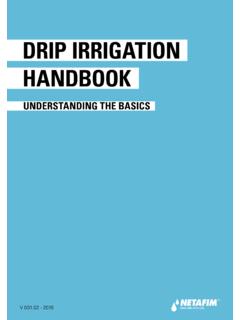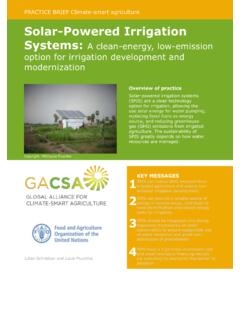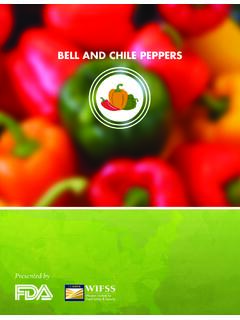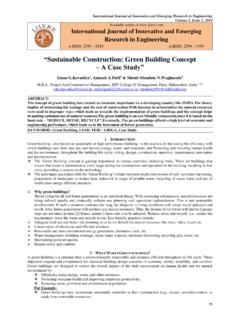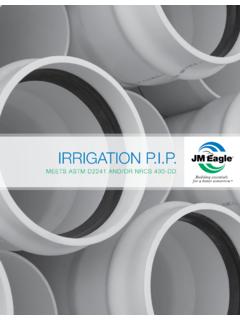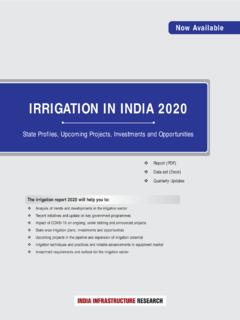Transcription of Proposal Irrigation System for Vegetable Gardens at ...
1 1 Rooiberg Proposal _____. Irrigation System for Vegetable Gardens at Rooiberg School _____. Dams for Africa June 2002. Nicholas Papenfus, BSc Eng (Civil), MSAICE, MICT. Dams for Africa, Suite 200, Private Bag X09, Weltevreden Park, 1715, Gauteng, South Africa. Tel (011) 475-2764/4230, Fax (011) 475-8381, e-mail : 2 Rooiberg Purpose The students of Rooiberg School have started a fledging Vegetable garden at the school (see figure 3) under the guidance of Emily Schneider. The aim is to teach the students new skills in agriculture, and to increase the level of nourishment in their diets.
2 As the cultivated area increases they will be able to sell some of the vegetables to the community, and in so doing generate sufficient income to (1) purchase more seeds/fertilizer to grow even more produce, (2). operate and maintain the equipment used in the garden and, (3) eradicate poverty in the lives of all participants and their families. st Thus on 31 May 2002, the writer, representing Dams for Africa (DFA), was invited by Emily Schneider and the principal, Emily Malebye (see figure 2), to assess the current water supply, and propose ways of providing sufficient water to allow cultivation on a substantially larger scale.
3 (Currently water is carried by buckets over long distances, severely limiting productivity). Background The current infrastructure consists of a borehole, which possibly still has a submerged pump, an 8m diameter reservoir, a old disused centrifugal booster pump, two tank-stands without tanks, two 5000 litre tanks on 5m high stands, and an electrical distribution board nearby. These components are shown variously in figures 1, 5 and 6. It would seem that the initial intension was that the borehole water should be pumped either to the 5000 litre tanks, or to the reservoir.
4 Once the reservoir was full, its water was pumped via the powerful centrifugal booster pump (see figure 6) to irrigate the playing fields. Presumably this was done with sprinklers, but there is no evidence of this equipment. On inspection, the reservoir was found to be empty, and the corrugated iron elements that make up its walls are severely corroded at the joints. The concrete base appears to be sound. The electrical switchgear for the centrifugal pump is missing, and it is not known if either the motor or pump is still working. The location of the borehole could not be established during the visit and will require some investigation/exploration.
5 It is therefore not known whether or not there is a pump in the borehole. Proposed Irrigation Scheme at Rooiberg School It is proposed that the existing unused 5m high stands be painted and that their rotten wooden platforms (see figure 5) be replaced. Thereafter two new 5000 litre tanks should be erected on these stands, and the necessary pipes should be connected. For budget purposes it is assumed that after such a long interval the borehole pump is either stolen or is unserviceable, and hence a replacement has been budgeted for. Before this is done, the depth and yield of the borehole should be determined and a pump/motor purchased that has a slightly lower capacity than the borehole's 24 hour yield.
6 To prevent the theft of the pump it is advisable to take certain security precautions. These should include (1) using galvanized pipes for at least 2m laterally and 6m vertically, (2) constructing a secure enclosure with a 10mm thick lockable lid, (3) concealing the borehole and security enclosure by ensuring that the lid is covered by at least 200mm of ground. The Irrigation System consists of 130m of 50mm ldpe pipe coming from the tanks and running along the highest ridge of the garden (along the fence), with 12mm dripper pipes coming off every meter (see figure 1).
7 An example of a cabbage patch under drip Irrigation is shown in figure 7,. while figure 8 shows how spinach can be similarly irrigated. (These picture are from another 3 Rooiberg project). drip Irrigation is strongly advised where limited water is available, as this is often the case with boreholes. From this configuration, beginning with the borehole, and terminating with the dripper pipes, it is evident that the 8m reservoir, and the old centrifugal booster pump are not required at this stage, since the 2 x 5000 litre tanks will have more than sufficient storage capacity to cultivate the.
8 Hectare area indicated on plan in figure 1, and shown pictorially in figure 4. However if ground further away is later developed for small scale farming, the expense of repairing and re-using the reservoir and centrifugal-pump may be feasible. There is also another hectare of land available east of the soccer field, and hectare west of the soccer field. Clearly, developing these areas should only be considered once the students/community are proficient in cultivating the area shown in figure 1. Table 1 - Rooiberg Food Gardens Item Arranged by Cost 1 Repairs existing 6m tank stand Paint DFA (d).
9 Labour costs to paint the stand Students Material for new wooden platform DFA (d). Labour for above Students 2 Borehole (d). Locate existing Borehole Community (a). Yield test on Borehole DFA Installation of Pump and Motor (b) DFA Electrical Connections DFA 3 Borehole security (d). Excavation of a pit to given size Community Supply and install secure enclosure (c) DFA (e). 8m x 40mm galvinised steel pipe and fittings DFA 4 Installation of 2 x 5000 litre tanks Supply and install 2 x 5000 ltr tank complete with connections and ancillary pipework DFA Installation of a level control switch DFA Filtering System DFA (d).
10 Excavation of trench from borehole to tanks Community 5 Irrigation pipes 130 m x 50mm LDPE main line distribution pipe DFA 100 off 12mm drip saddles DFA 2500m x 12mm od class 3 LDPE dripper with 2 litre/hr hole at 500mm DFA Installation of drip Irrigation System DFA Project management fee at 15% All prices excluding VAT Total Notes (a) This is required in order to determine the strength of water up to a yield of 8000 litre/hr and to a depth of up to 100m. This information is required to correctly size the submersible pump. (b) It is assumed that the existing motor and pump is either stolen or badly corroded/unserviceable, necessitating a new pump and motor.


